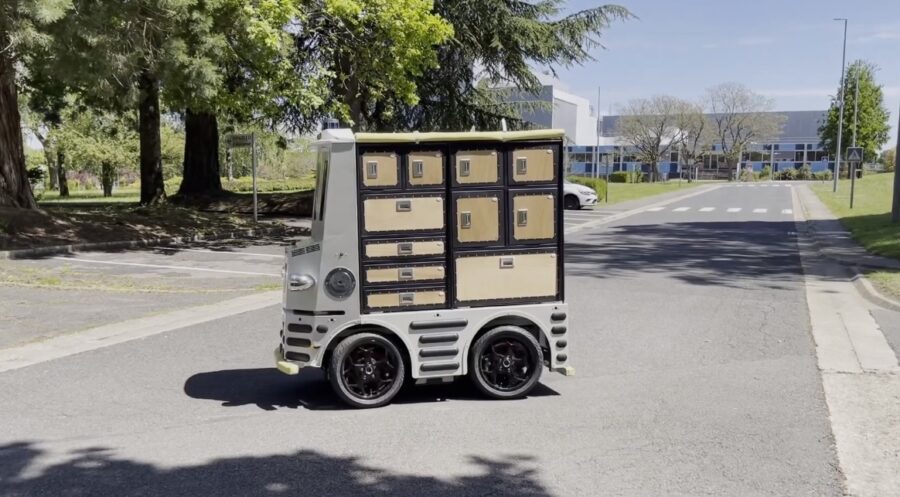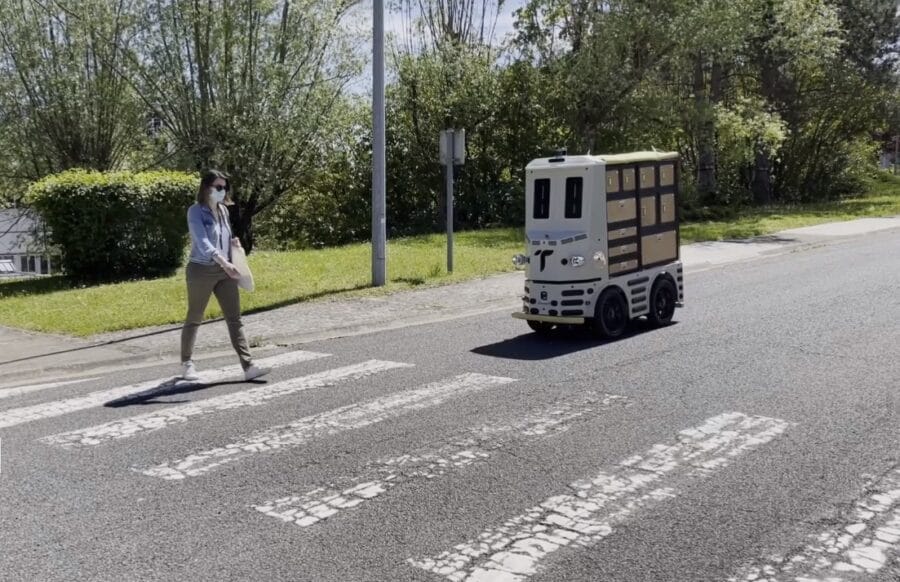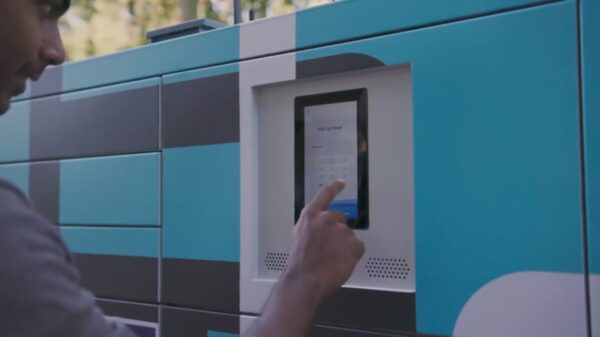An autonomous robot will assist EDF with parcel delivery and on-site surveillance at the EDF Lab Les Renardières
The experiment’s details:
- Timeframe: January – December 2021, with an eventual extension to other sites in 2022
- Partners: EDF, TwinswHeel
- Focus: On-site autonomous deliveries for EDF’s employees on the campus EDF Lab Les Renardières + autonomous surveillance at night
- Location: EDF Lab Les Renardières, Écuelles, France
- On-site employees: nearly 1000
- Robot: CiTHy L, an autonomous robot developed by TwinswHeel
- Capacity: Approx. 60 deliveries per day (on multiple rounds)
We’re currently working on an experiment on one of the EDF campuses in France, the EDF Lab Les Renardières.
In it, CitHy L will deliver parcels to EDF’s employees who are working on site. The goal of the experiment is to automate and speed up deliveries, provide a more convenient solution to both employees and logistics operators, increase productivity, and improve employee satisfaction. The same robot will also assist in the campus’ surveillance at night, and will be able to detect unusual activity and potential security threats.

One of the objectives of this experiment is also to be the first in Europe to run a long-lasting daily operational solution for autonomous parcel deliveries on an industrial site. Based on EDF’s needs and the results and KPIs from the experiment, this solution could then be scaled and implemented at other locations.
In this article, we’ll look at the two distinct use cases, EDF’s needs, as well as the experiment’s objectives, technical details, and the delivery process.
Use cases
For this experiment, there are two distinct use cases:
1. Autonomous parcel deliveries
EDF’s logistics provider is currently handling approx. 60 parcel deliveries daily on the site. EDF is looking for a way to improve on-site parcel deliveries, and test different smart city solutions that can:
- Facilitate the work of the logistics provider
- Be more convenient for EDF’s employees.
An autonomous logistics solution will streamline the delivery service, making it more convenient for both the logistics provider and EDF’s employees by:
- Automating deliveries and reducing manual work for the logistics provider
- Providing a better service to employees and helping them save time: they’ll no longer have to go pick up their parcels, but will, instead, have their parcels delivered to the building they work in.
- Moreover, through automatic delivery rescheduling, real time meeting point interaction between the delivery bot and the recipient, and other innovative services (mainly possible with a robot and not with a human and a van) will be tested to lower missed deliveries.
As a result, this will help improve efficiency, productivity, and employee satisfaction.
2. Autonomous surveillance during nighttime
Once the logistics solution is set up, we’ll also work on developing an autonomous surveillance solution: the same robot that will be used for deliveries at daytime will monitor the campus at night.
Turning the daily logistic service into a night surveillance patrol bring the following values for EDF and our customers:
- Increased use of the robotic solution over a 24-hour period
- A state-of-the-art accurate intrusion detection with artificial intelligence and machine learning
- All-night patrolling without interruptions
- The speed and safety of an autonomous vehicle, not a simple robot
- Lower costs, lower risks and an increase in service value
The objective of the experiment is to provide a scalable autonomous solution for both of those needs in an industrial setting, which could then be implemented on different campuses (of both EDF and their partners and clients).
Besides that, the EDF R&D team is also looking to test the possibility of using inductive charging on autonomous robots and vehicles.
Technical details
To detect other traffic participants, obstacles or any unusual activity that could pose a threat to the security of the campus, the robot is equipped with a lidar, multiple cameras, including an infrared camera, and ultrasonic sensors.
At daytime, the robot will do multiple rounds and will handle approximately 60 parcel deliveries per day. It has lockers of different sizes, between 10 and 115 liters, and the maximum weight of each parcel is 25 kg.
It’ll have to share roads and sidewalks with:
- Pedestrians
- Cyclists
- Cars
- Vans and small trucks
It’s programmed to always give way to other participants in traffic, and if it encounters an obstacle that it cannot overcome, a human operator (safety driver) will take over and control it. The safety driver will also assist the robot (from a distance) with road crossings and other difficulties, and will make sure the robot is moving safely.

On site, it can also encounter the following obstacles:
- Sidewalk curbs
- Road crossings
- Steps
- Garbage bins
- Trees and bushes
- Rails.
At night, the robot will monitor the campus by doing multiple rounds on its territory. It’ll alert the security personnel if it detects unusual activity or potential security threats. It also records videos that’ll allow detailed inspection if necessary.
Its speed on site will be 7 km/h and 20 km/h at night.
The delivery process
Once the logistics provider receives all parcels for the day, they’ll sort the ones that can be delivered by the robot (i.e. that fit in the lockers and that are not heavier than 25 kg).
Each recipient then receives an email asking them whether they want their parcel delivered by an autonomous robot in front of the building where they work. If yes, they can book a time slot for the delivery.
Based on the different slots that are booked and on the location of each building, the robot’s route is optimized, and the operator receives all necessary information on how to load the robot (i.e. on which parcel to put in which locker). The robot will then begin its round.
Five minutes before it arrives at its destination, the robot will send a message to the recipient; once it’s there, it’ll send another message, with a PIN code that unlocks the locker.

The recipient can then find the robot in front of the building and use the code to access their parcel. If the person is not available at that exact moment (f.e. if they’re in a meeting), they’ll have the option to reschedule the delivery by 15-20 minutes, or to the robot’s next round.
This makes deliveries more efficient and convenient for everyone involved, and especially for EDF’s employees: instead of having to drive to the warehouse to receive a parcel, they’ll receive it delivered to their building.
Conclusion
Currently, the experiment is in its implementation phase, which will be followed by a deployment phase in late August 2021. As all campuses are privately owned, the robot doesn’t need additional permissions to operate in public areas.
The solution that LMAD has designed is very versatile and can be easily adapted to different use cases (in this instance, delivery and surveillance). It’s scalable and can be implemented at different sites of both EDF and their partners.

